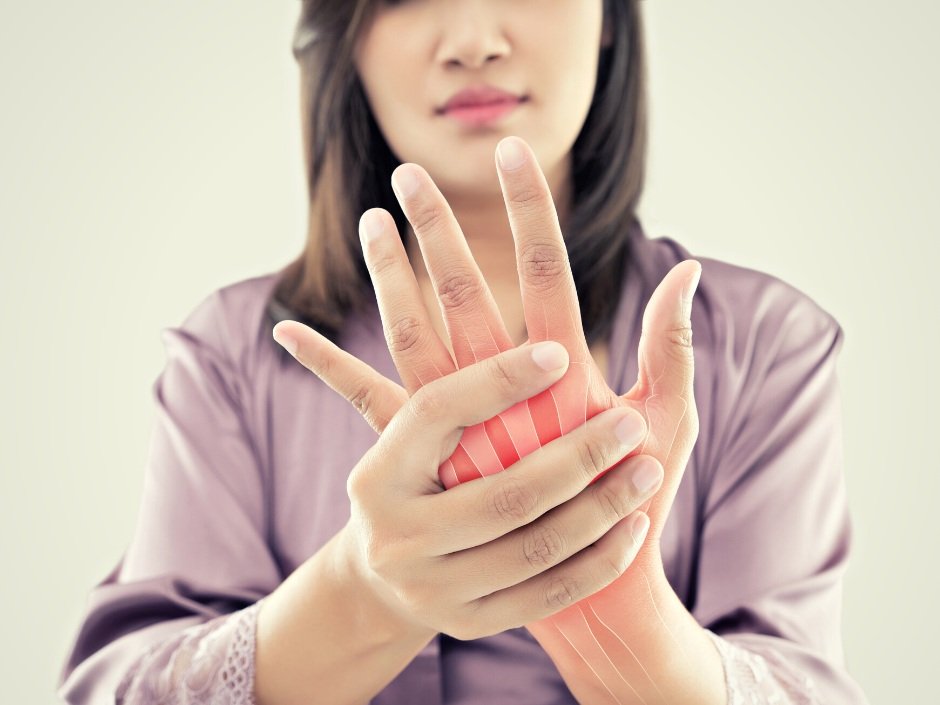Physical Therapy for Rheumatoid Arthritis
Rheumatoid arthritis is a systemic autoimmune disease that affects the soft tissues around joints, causing joint inflammation and pain and limiting joint function. Early detection of the condition and treatment is key, which includes drug therapies and targeted exercise. Physical therapists help rheumatoid arthritis patients manage pain and improve muscle strength and joint function and range of motion through a therapeutic aerobic and strengthening exercise program.
What is Rheumatoid Arthritis?
Rheumatoid arthritis is a chronic, systemic autoimmune disease that affects the soft tissues around the joints, causing joint pain, inflammation, and fatigue. With rheumatoid arthritis, there is an increased production of systemic inflammatory agents (at levels up to 100 times those of healthy adults) that attack the synovium (lining) of joints and other parts of the body. These high levels of inflammation lead to joint swelling and damage, joint pain and stiffness, and reduced physical function.
The cause of rheumatoid arthritis is unknown but is thought to be related to a combination of genetics and environmental or hormonal factors. Individuals are diagnosed normally during mid-life around age 40. Women are more likely to develop the condition and are diagnosed with it three times more than men. Rheumatoid arthritis (RA) symptoms are often symmetrical (affecting both sides of the body) and initially affect smaller joints in the hands, wrists, and knees.
Symptoms of rheumatoid arthritis include:
Stiff joints that feel worse in the morning
Painful swollen joints on both sides of the body, often starting in smaller joints like the fingers and over time moving to larger joints like the knees and ankles
Bouts of fatigue and general discomfort
Low-grade fever
Loss of joint function or range-of-motion
Redness, warmth, and tenderness in joint areas
Over time, RA can affect the entire body including the internal organs and cardiovascular system. Rheumatoid arthritis alternates between times of remission and flare-ups, but even during the inactive remission states, systemic levels of inflammatory cytokines remain dysregulated, which contributes to systemic effects of the disease.
One effect of RA on the entire body is “rheumatoid cachexia,” which is an accelerated loss of muscle mass. Early diagnosis of rheumatoid arthritis and treatment is important to manage the condition. Treatment involves both medication and a comprehensive exercise program.
Physical Therapy for Rheumatoid Arthritis
Physical therapy can significantly augment medical drug treatment to manage rheumatoid arthritis through therapeutic exercise, patient education, aquatic therapy, and manual therapy. The therapist works to manage and reduce pain, improve the function and range of motion of joints, and increase muscle strength. Initially, the physical therapist performs a functional assessment evaluating transfer ability (from seated to standing), posture, gait analysis, ability to perform daily activities, joint range of motion, muscle strength, and respiratory function. The therapist then designs a comprehensive treatment program tailored to the patient’s specific needs, abilities, and condition.
Studies have shown that exercise does not worsen RA symptoms and in fact, is a key treatment to help reduce disability associated with rheumatoid arthritis. Exercise has been shown to be effective in reversing the loss of muscle mass, reducing RA-related fatigue, restoring joint motion, and improving physical function in RA patients without exacerbating RA symptoms. Research has revealed that both low-intensity aerobic exercise and resistance training are effective in increasing aerobic capacity and joint mobility as well as safely reversing rheumatoid cachexia and building muscle strength. One two-year study of early RA patients engaging in a dynamic strength training program showed significant improvements in muscle strength along with reductions in systemic inflammation, pain, morning stiffness, and disease activity.
Physical therapy treatment for rheumatoid arthritis can include:
Ice and heat modalities to manage pain and swelling: Ice can ease RA flare-up pain by slowing circulation and reducing swelling. Heat triggers the body’s natural healing process by relaxing joints and muscles and speeding up blood flow to the painful area, bringing oxygen and nutrients.
Passive treatment using ultrasound: The ultrasound creates a gentle heat that increases blood circulation to deep tissues, helping to reduce inflammation, stiffness, and pain.
Aerobic exercise: Low-impact exercise like walking or biking helps to build aerobic capacity and strengthen muscles without placing unnecessary stress on the joints.
Aquatic therapy: Exercising in warm water not only allows the patient to perform aerobic conditioning without stressing the joints but also can provide pain relief due to the warm compressive force of the water on the body.
Strength training: Targeted stretching and strengthening of the muscles around the affected joints to lengthen and strengthen the muscles and improve joint movement and stability.
Manual therapy: Gentle soft tissue and joint mobilizations help to improve the range of motion of joints and relieve pain.
Rheumatoid arthritis is a life-long condition that requires careful and targeted management. Our physical therapists are here to help you navigate the condition and maintain strength, function, and range of motion in your joints safely.
